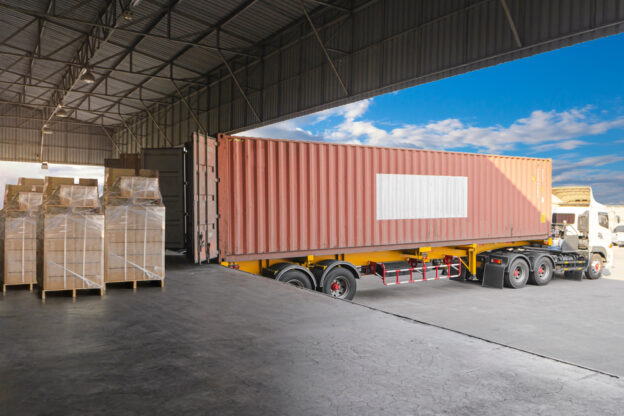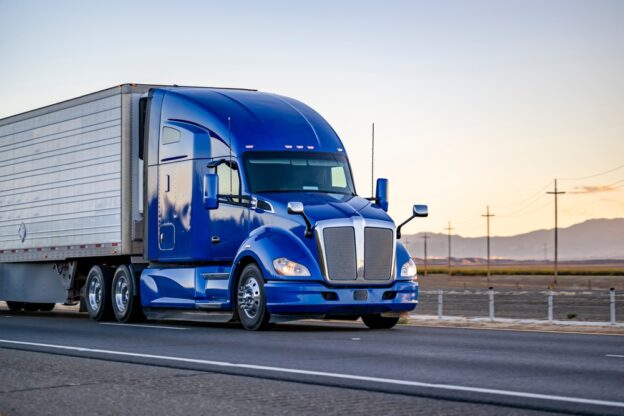Weight plays a major role in freight transport, From legal compliance to shipping rates, knowing how to classify and calculate different types of weight is essential for trucking professionals. Tare, net, and gross weight each serve a specific purpose in logistics and affect how loads are managed, priced, and regulated.
A clear understanding of these weight types helps avoid overloading, reduces the risk of fines, and improves efficiency on the road.
Definitions
Tare Weight
Tare weight refers to the weight of an empty truck, trailer, or container. This includes the vehicle itself along with any permanent equipment or materials, such as fuel or toolboxes, but does not include cargo. Tare weight is used as a starting point to calculate both net and gross weight.
Net Weight
Net weight is the actual weight of the cargo being transported. It does not include the truck, trailer, or any packaging or equipment used during shipping. This number is important for pricing, freight classification, and understanding how much product is being delivered.
Gross Weight
Gross weight is the total weight of the vehicle and its contents. This includes the tare weight and the net weight combined. It’s the number most often checked at weigh stations and is subject to legal limits based on the type of vehicle and route.
How to Calculate
Tare Weight Calculation
To find tare weight, weigh the empty truck or container on a certified scale. This should be done with all standard equipment, fuel, and fluids onboard, but without any cargo. Many trucking companies record tare weights for each vehicle to streamline future calculations.
Net Weight Calculation
Net weight is calculated by subtracting the tare weight from the gross weight.
Formula: Net Weight = Gross Weight − Tare Weight
This tells you exactly how much product or cargo is being transported.
Gross Weight Calculation
Gross weight is determined by weighing the fully loaded vehicle or container. This includes the tare weight plus the weight of the cargo.
Formula: Gross Weight = Tare Weight + Net Weight
Accurate gross weight measurements help ensure legal compliance and protect against overloading.
Practical Examples
Individual Item Shipment
A pallet of boxed goods is being loaded into a delivery van. The empty van has a tare weight of 6,000 pounds. After loading, the van is weighed again and shows a gross weight of 7,200 pounds.
Tare Weight: 6,000 lbs
Gross Weight: 7,200 lbs
Net Weight: 1,200 lbs
This tells the carrier that the cargo alone weighs 1,200 pounds.
Bulk Freight Shipment
A dump truck is used to haul gravel. The empty truck weighs 25,000 pounds. After being loaded, it weighs 60,000 pounds.
Tare Weight: 25,000 lbs
Gross Weight: 60,000 lbs
Net Weight: 35,000 lbs
These numbers are especially important when transporting bulk materials, where total load weight can quickly approach or exceed legal limits.
Regulatory Considerations
Legal Weight Limits
Commercial trucks are subject to strict weight regulations. The federal gross vehicle weight limit for trucks on interstate highways is 80,000 pounds, including cargo, vehicle, fuel, and equipment. Some states may allow higher limits with special permits or different axle configurations.
Consequences of Non-Compliance
Operating above legal weight limits can lead to serious penalties. These may include fines, delays at weigh stations, equipment damage, and increased liability in the event of an accident. Carriers may also face long-term impacts such as lower safety ratings and higher insurance premiums.
Impact on Shipping Costs
Weight plays a central role in how freight is priced. Accurate weight measurements help determine freight class, rate structures, and fuel surcharges. Heavier shipments often cost more to move and may require special equipment or permits.
Incorrect weight reporting can lead to billing disputes, reclassification fees, or shipment delays. In Less-Than-Truckload (LTL) shipping, where freight from multiple shippers shares trailer space, inaccurate weights can affect load planning and disrupt delivery schedules.
Best Practices for Trucking Companies
Staying on top of weight management helps trucking companies operate more efficiently, avoid fines, and maintain safety on the road. These best practices keep things running smoothly at every stage of a shipment.
Keep Accurate Records: Maintain up-to-date records of tare weights for all trucks and trailers in your fleet. This speeds up load calculations and reduces the risk of errors.
Use Certified Scales: Always weigh vehicles and cargo on certified, well-maintained scales. Inaccurate readings can lead to compliance issues and billing disputes.
Train Drivers and Staff: Ensure drivers and dispatchers understand how to identify and verify tare, net, and gross weight. Basic weight awareness can prevent costly mistakes.
Check Weight Before Departure: Confirm total weight and axle distribution before hitting the road. This helps stay within legal limits and reduces the chance of delays at weigh stations.
Review Shipper Information: Double-check weight data provided by shippers. If numbers seem off, verify with your own scale to avoid surprises during transit.
Key Takeaways
Accurate weight management is more than a compliance issue. It is a practical way to protect your business, avoid delays, and manage costs effectively.
Advanced Commercial Capital provides factoring solutions designed for trucking companies. We help you access cash quickly for fuel, maintenance, payroll, and more. There are no setup fees and no long-term contracts. Just simple support that works when you need it.
Have questions or ready to get started? Contact us today and keep your trucks moving.










 As the name implies,
As the name implies,